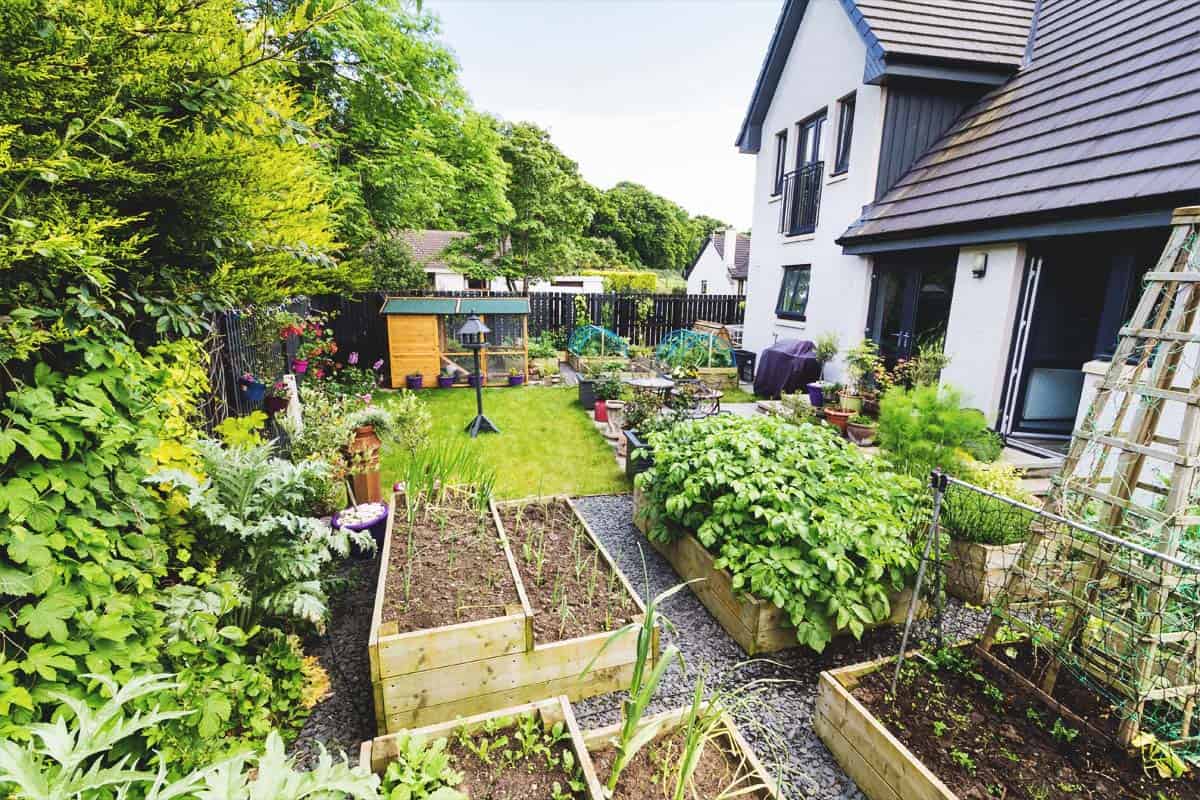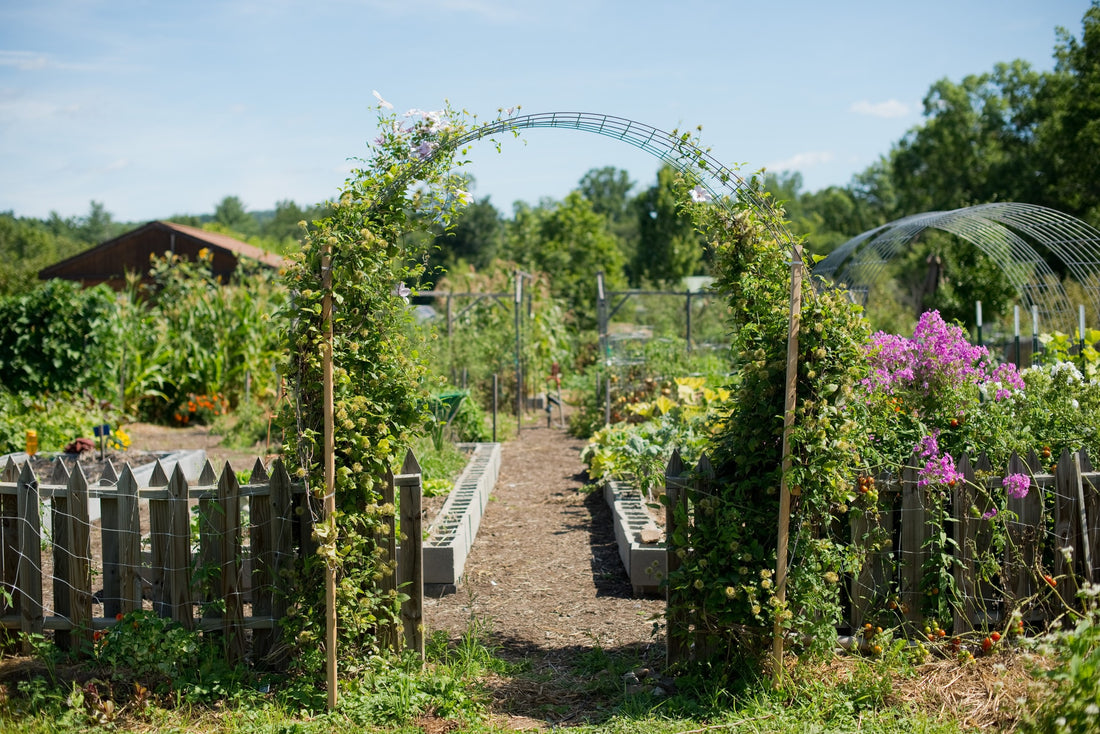Essential Tips for Homestead Gardening at Home
Essential Tips for Homestead Gardening at Home
Blog Article
Uncover the Secrets to Developing a Lovely and Effective Gardening Area
Producing a effective and attractive gardening space is not merely an issue of growing veggies and blossoms; it calls for a critical technique that incorporates numerous crucial aspects. From picking the right area based on sunshine and soil kind to attentively designing your design and picking appropriate plants, each decision plays a crucial duty in the success of your yard.
Picking the Right Place
Picking the ideal place for your garden is crucial to its success and total aesthetic allure. The initial step in this procedure includes evaluating sunshine direct exposure, as the majority of plants call for at the very least six hours of straight sunshine daily (Homestead Gardening). A south-facing yard typically obtains the most light, while shaded locations can restrain growth and flowering
Additionally, take into consideration soil quality and water drainage. Well-draining dirt is important to avoid waterlogged roots, which can result in plant diseases. Conducting a soil examination can provide valuable details concerning pH levels and vitamins and mineral content, enabling you to change the dirt as necessary.
Furthermore, distance to water sources is another aspect to evaluate - Homestead Gardening. Having very easy accessibility to a hose pipe or irrigation system can simplify the watering process and urge regular plant care. Wind protection is also important; positioning your garden near structures, such as walls or fencings, can protect it from extreme winds that might harm delicate plants
Finally, take into consideration availability for maintenance and harvesting. A well-placed garden enables for practical gain access to, making sure that you can quickly have a tendency to your plants without causing undue tension or disturbance. Thoughtful area option lays the structure for a growing garden.
Choosing Plants Carefully
When choosing plants for your yard, it's important to consider variables such as environment, dirt conditions, and individual preferences to guarantee a effective and harmonious room. An extensive understanding of your regional climate will direct you in selecting plants that grow in your certain environment. For example, selecting drought-resistant varieties is advantageous in deserts, while moisture-loving varieties may be better for areas with high rainfall.
Dirt problems are equally crucial; conducting a soil test can disclose pH levels and nutrition web content, enabling you to select plants that will grow. Indigenous plants are usually an outstanding selection, as they are commonly well-adapted to neighborhood dirt kinds and call for less upkeep.
Reflect on your personal choices-- selecting plants that reverberate with your visual tastes will enhance your pleasure and commitment to maintaining your yard. By very carefully evaluating these variables, you can produce a diverse and growing plant selection that elevates your gardening experience.
Creating Your Yard Layout
With a thoughtfully chosen plant selection in hand, the next action is to develop a yard design that maximizes both appeal and performance. Begin by examining the offered area, thinking about factors such as color, sunshine, and wind patterns. A tactical layout like this needs to integrate different areas, consisting of locations for growing, pathways, and possibly seating.
Begin with bigger plants or focal factors, such as trees or high perennials, placed tactically to create visual passion. Layer smaller sized plants in front to enhance depth and texture. Take into consideration the development routines of your chosen plants; taller selections should be positioned at the back or center of beds, while shorter ones can line the edges.
Incorporating pathways not only facilitates accessibility for maintenance however likewise welcomes exploration. Usage products that match the yard's overall aesthetic, whether gravel, wood, or rock chips.
In addition, think of seasonal modifications and how your format will certainly look throughout the year. Incorporating evergreens along with seasonal blossoms can make sure year-round charm. Eventually, a properly designed garden design integrates the natural appeal of plants with sensible considerations, causing a room that is both welcoming and efficient.
Enhancing Soil Health

To enhance soil health and wellness, start by performing a dirt test to examine pH levels, nutrition web content, and soil texture. This will certainly notify your amendments. Integrate raw material such as compost, well-rotted manure, or leaf mold and mildew to boost soil framework, water retention, and microbial task. In addition, exercising plant rotation can protect against nutrient exhaustion and minimize insect and disease pressures.
Mulching is click for info an additional reliable strategy; it not only preserves dampness yet likewise reduces weeds and progressively enriches the soil as it breaks down. Preventing excessive husbandry is vital, as it can disrupt dirt framework and damage valuable organisms. Instead, embrace no-till or minimal tillage techniques to keep soil integrity.

Maintaining Your Yard Efficiently
A well-kept garden is a resource of satisfaction and performance, calling for constant attention to guarantee that plants thrive and the landscape remains inviting. Effective yard maintenance includes several vital techniques that boost the health and wellness of your plants and the overall visual of your area.
Normal watering is vital; nonetheless, it is very important to tailor your watering timetable based on the specific demands of your plants and neighborhood climate problems. Mulching can aid maintain wetness, suppress weeds, and manage soil temperature. Prompt weeding stops competition for nutrients and sources, making sure that your plants grow.
Trimming is another essential task. It urges healthy development, removes dead or diseased branches, and shapes plants to preserve an attractive framework. In addition, keeping an eye on for diseases and insects is essential; early detection and treatment can save your plants from considerable damages.
Fertilization needs to be implemented attentively, using natural choices whenever feasible to promote lasting dirt health and wellness. Lastly, seasonal jobs such as growing, separating perennials, and planning for wintertime will certainly guarantee your yard remains vivid year-round. By following these practices vigilantly, you can cultivate a yard that is both stunning and efficient.
Conclusion
Picking an ideal place with sufficient sunshine, selecting appropriate plants, developing a cosmetically pleasing design, boosting soil health and wellness, and making sure regular maintenance are vital elements. By incorporating these practices, one can cultivate a growing garden that not just enhances the landscape yet additionally promotes environmental equilibrium and sustainability.
From choosing the right place based on sunshine and dirt type to attentively creating your format and choosing appropriate plants, each choice plays a my company critical duty in the success of your yard. Well-draining soil is vital to avoid water logged origins, which can lead to plant diseases.When selecting plants for your yard, it's essential to think about aspects such as environment, dirt problems, and individual choices to make certain a harmonious and efficient space. Inevitably, a properly designed yard layout integrates the natural elegance of plants with practical factors to consider, resulting in a space that is both welcoming and efficient.

Report this page